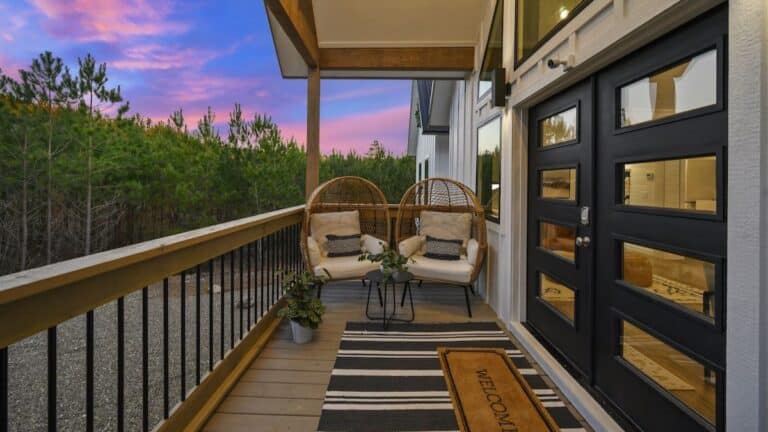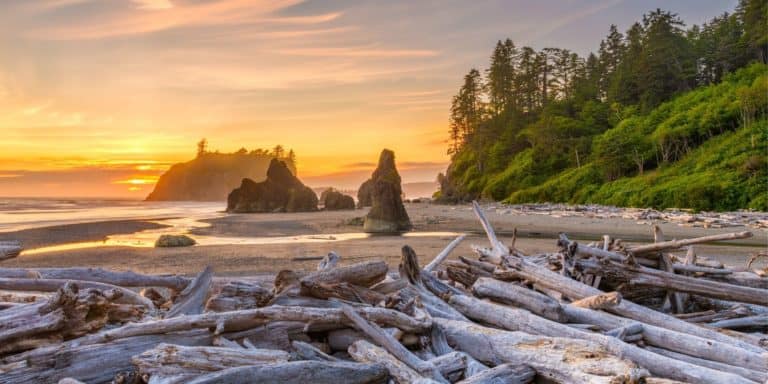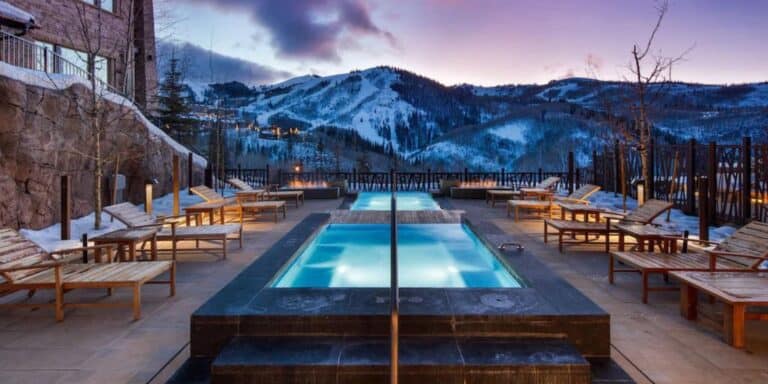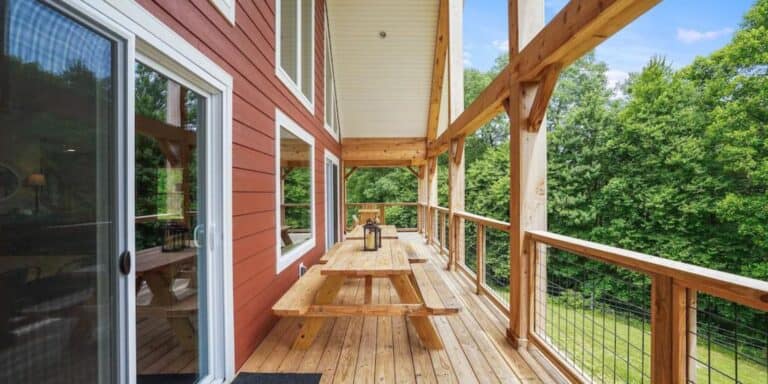Home to five of the country’s most beautiful national parks, Utah is one of the best places in the U.S. for a national parks road trip. From Zion to Bryce Canyon and Capitol Reef to Arches, Utah’s parks are scattered within roughly 300 miles of one another, making it possible to see all of them in an epic 10-day trip. It’s especially ideal for families with kids, given that destinations are rarely more than an hour or two from one another.
This national parks road trip itinerary starts in Las Vegas and covers the best landscapes in Utah, hitting icons like Zion and Bryce Canyon, as well as lesser-known destinations like Bentonite Hills and Goblin Valley State Park. If you’re short on time, stick to the minimum timeframes provided for each park or opt out of some of the day trips. If you have more time, add a night wherever you please.
10-Day Utah National Park Itinerary
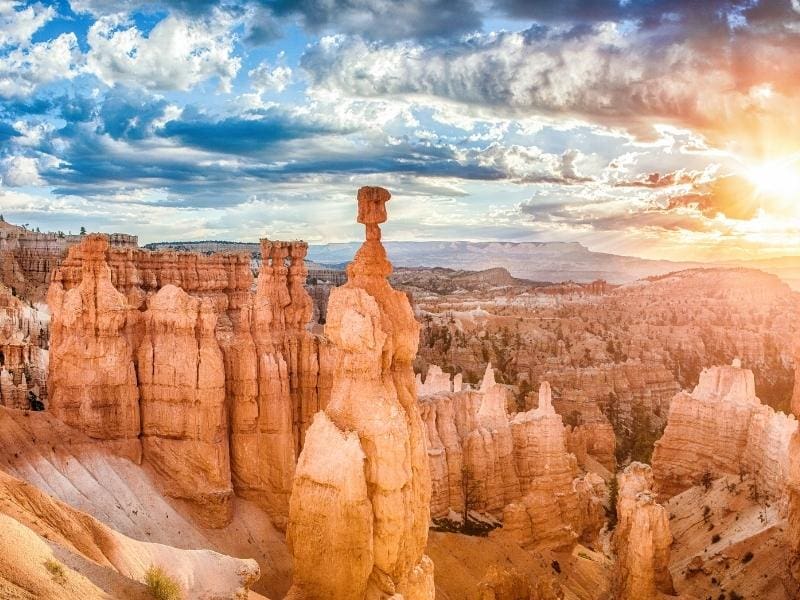
Table of Contents
- Interactive Road Trip Map
- Utah National Parks Itinerary
- How To Use This Guide
- Best Time For A Utah Road Trip
- Utah National Park Road Trip Stops
Utah National Parks Road Trip Map

Copy as a new map in Google Maps to customize your itinerary by adding and removing destinations.
Other Utah content you might like:
- Colorado Utah Road Trip Itinerary
- Best Moab Airbnbs and Vrbos
- Where to Stay Near Zion National Park
- Best Zion Glamping Options
- LA to Grand Canyon Road Trip
Utah National Parks Itinerary
- Zion National Park, 3 nights, 2-hour drive from Las Vegas to Zion
- Coral Pink Sand Dunes State Park – Day trip, 45 minutes from Zion to Coral Pink Sand Dunes
- Bryce Canyon National Park – 2 nights, 1.5-hour drive from Zion to Bryce Canyon
- Capitol Reef National Park – 2-3 nights, 2-hour drive from Bryce Canyon to Capitol Reef
- Bentonite Hills – Day trip to a remote section of Capitol Reef National Park
- Goblin Valley State Park – Day trip, 1-hour drive from Capitol Reef to Goblin Valley
- Arches National Park – 1-2 nights, 2-hour drive from Capitol Reef to Arches
- Canyonlands National Park – Day trip, 40-minute drive from Moab to Canyonlands
- Dead Horse Point State Park – Optional day trip, 40 minutes from Moab to Dead Horse Point
How to Use This Road Trip Guide
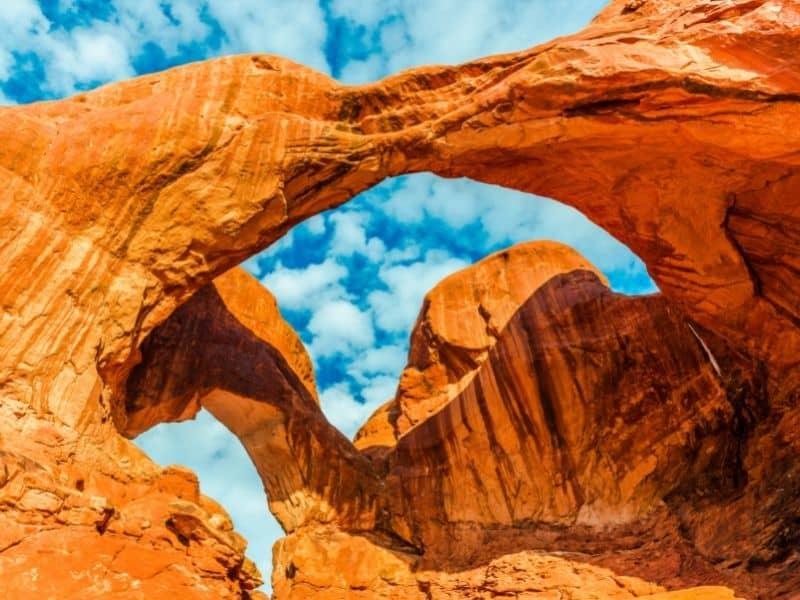
This Utah National Parks road trip itinerary is meant to serve as a guide and can be altered depending on priorities, budget, and timeframe. We recommend a minimum of 12 to 14 days to complete the route in full. If time and budget allow, set aside 2 to 3 weeks and adopt a slower pace or combine this with a Grand Canyon Road Trip. To complete this Utah itinerary in 10 days, hit only the national parks and cut out the state parks and day trips in between.
If you have a week or less available for your Utah national parks road trip, we recommend narrowing this itinerary down to include just two or three stops. Zion, Coral Pink Sand Dunes, and Bryce Canyon make for an epic Utah road trip in their own right, as do Arches, Canyonlands, and Capitol Reef.
The parks will always be there (at least in our lifetime) – try not to pack so much in that you end up spending all your time on the road. Been there, done that, and it’s not fun for anyone.
When to Visit Utah’s National Parks
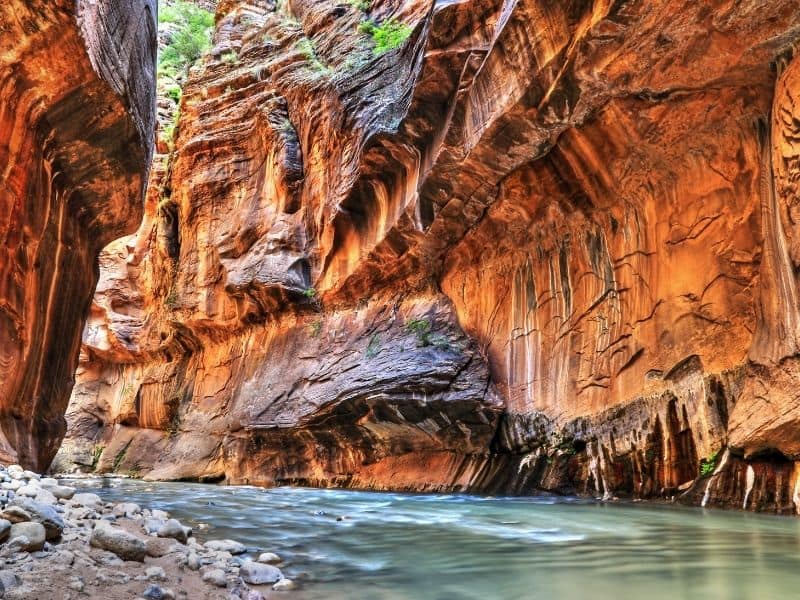
Most agree that Spring and Fall are the best times for a Utah National Parks road trip. In Spring, rivers are flowing, flowers are in full bloom, and the weather tends to be warm during the day and cool at night. Fall also brings moderate temperatures, changing leaves, and thinning crowds.
However, winter is also a beautiful time to tour Utah’s national parks. For one, winter receives the fewest visitors. Most parks also receive snow; there’s nothing quite like snowfall in the high desert. As an added perk, Zion’s shuttle system closes for the season, and you’re free to drive your private vehicle into the park.
Unsurprisingly, summer is the most popular time to visit Utah, primarily because it aligns with when most families take their vacation. However, temperatures can border on scorching. If you’re planning a summer visit, try to get an early start each morning to beat the heat.
Best 10-Day Utah Road Trip
Zion National Park
3 Nights, 2.5 Hour Drive from Las Vegas to Zion
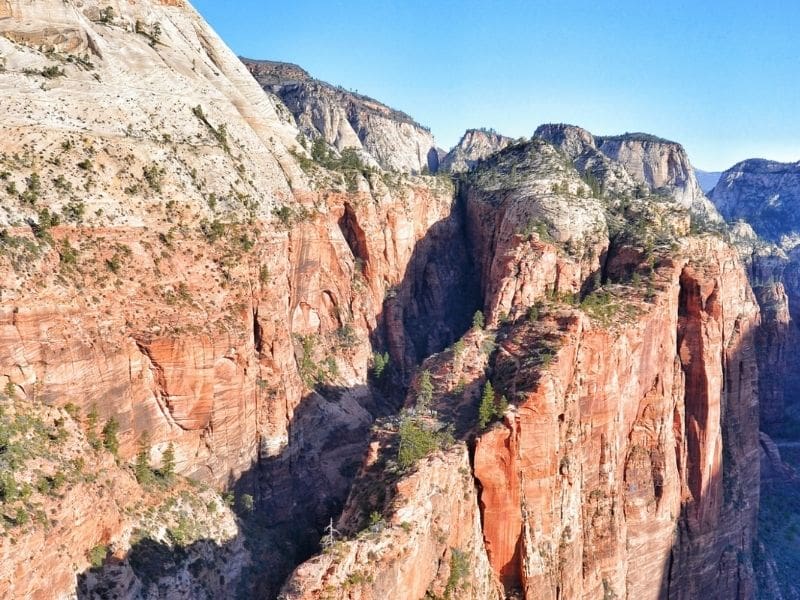
Known for its towering red cliffs split by the winding Virgin River, Zion is Utah’s most popular national park for good reason. Despite its relatively small size, it packs a huge punch and is the perfect place to kick off an epic Utah National Parks road trip.
Things to Do in Zion National Park
There are a number of stunning trails in Zion that vary in length and intensity. Perhaps Zion’s most infamous, Angels Landing, is not for the faint of heart. In fact, it’s one of the top ten most dangerous hikes in the U.S. A strenuous 5.5-mile roundtrip hike that will take around five hours to complete. If you want to experience the 360° views at the top safely, you’ll need a high level of fitness, good stability, no fear of heights, and a permit.
Located off Shuttle Stop 5, Emerald Pools Trail is a more moderate three-mile option. The hike features three pools, a waterfall, and incredible canyon views as you twist and turn uphill along the trail. After hiking to the top, take the Kayenta Trail back, following the signs to the Grotto trailhead.
Another iconic Zion hike is The Narrows, ranked fifth on National Geographic’s list of America’s Top 100 Adventures. With three different options to choose from, hikers can opt for an out-and-back six-mile day hike, a top-to-bottom 16-mile day hike, or a top-to-bottom 16-mile overnight hike.
Family-Friendly Attractions in Zion
For those with kids, the Riverside Walk is a great 1.9-mile out-and-back option with lovely views of the Virgin River. Court of the Patriarchs – a set of sandstone cliffs located off Shuttle Stop 4 – is another awesome kid-friendly destination.
If time permits, drive along Highway 9, a scenic byway running through a 10-mile section of Zion National Park. If you want to drive a longer 45-mile section, it runs all the way to Bryce Canyon.
Know Before You Go
Between March and late November, the main road through Zion National Park is only accessible via shuttle. During high season, the wait at the shuttle stops can be substantial, so arrive early to avoid crowded trails and hiking during peak heat. And, of course, bring plenty of water and sunscreen.
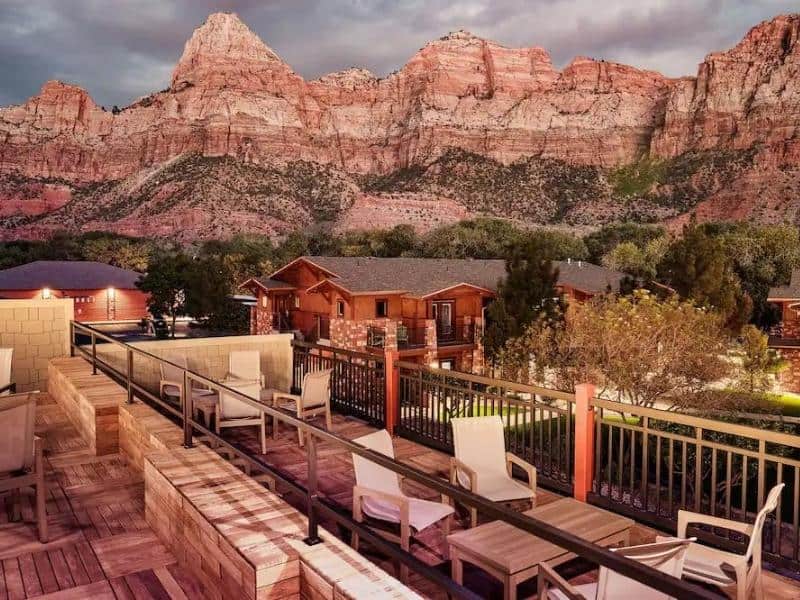
Where to Stay in Zion National Park
Zion National Park is unique when it comes to lodging in that there is only one lodge inside the national park and two campgrounds located just outside. As a result, most opt to base themselves in nearby Springdale, a charming gateway town near the park entrance.
Our Zion Lodging Guide covers all of the best places to stay inside and outside the park, and our Zion Glamping Guide gives a great overview of the top luxury tented camps in the area.
Coral Pink Sand Dunes State Park
1 Day, 45 Minute Drive from Zion to Coral Pink Sand Dunes
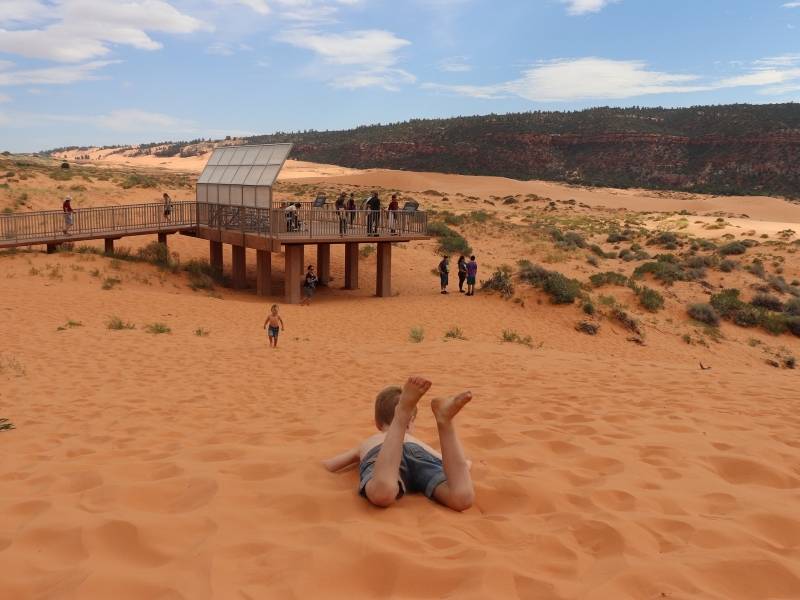
Experienced by Emilie from Love Life Abroad
Coral Pink Sand Dunes State Park is a great stopover on the way from Zion to Bryce Canyon. It’s located near Kanab and is the perfect place to stretch your legs, try your hand at sand sledding or sandboarding, or simply hike and play around in the sand. Unsurprisingly, it’s a firm favorite for kids.
Things to Do in Coral Pink Sand Dunes State Park
As the name suggests, Coral Pink Sand Dunes State Park is mostly known for its dunes. Sand sledding and sandboarding are popular activities, and the Visitor Center has both for rent if you don’t have your own. If you have one, you can ride your own OHV or explore the impressive dunes on foot. The dunes are huge, so there is plenty of space for everyone. The parking lot has a few picnic tables and toilet facilities.
Know Before You Go
If you decide to stop at Coral Pink Sand Dunes, try to arrive early in the morning or late in the afternoon, as it can get pretty hot. As you might guess, there is not much shade in the park. Plus, if you need to rent gear, such as a sandboard, you’ll want to ensure some are still available.
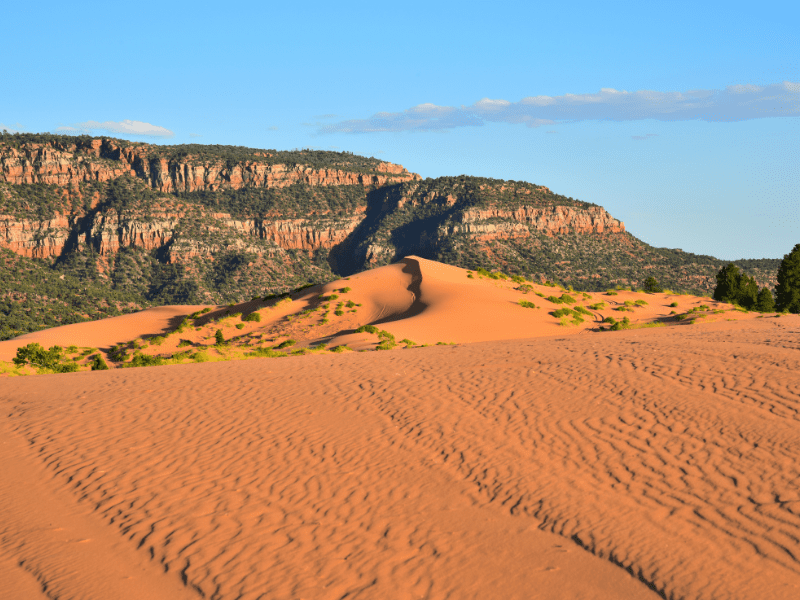
Where to Stay Near Coral Pink Sand Dunes
Coral Pink Sand Dunes can easily be done as a day trip on the drive from Zion to Bryce Canyon. However, if you’d like to overnight in the area, the best place to stay is in Kanab, which is only 19 miles from the state park. The Holiday Inn Express and Suites Kanab or the Hampton Inn Kanab are both good value options.
For campers, there is a campground located within the state park with 30 reservable sites. The campground features flush toilets, hot water showers, and potable drinking water.
Bryce Canyon National Park
2 Nights, 1.5 Hour Drive From Coral Pink Sand Dunes or Zion to Bryce Canyon
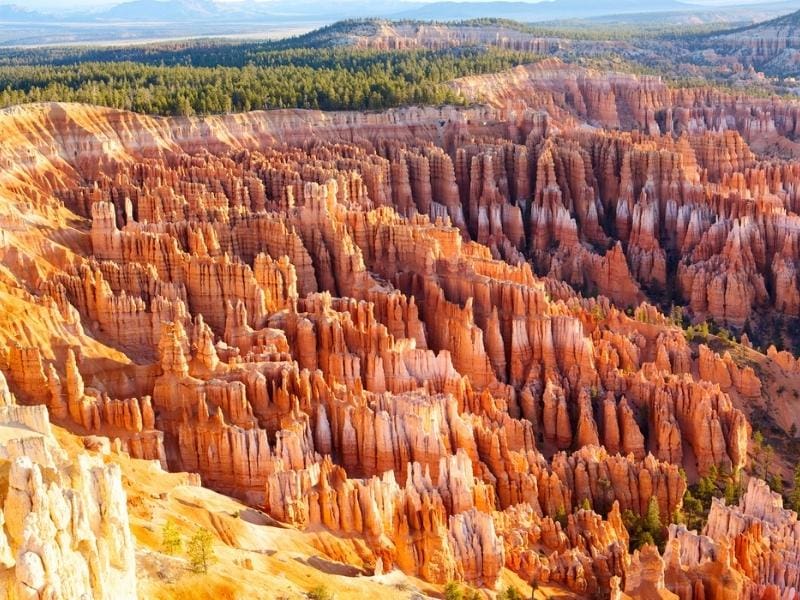
Bryce Canyon National Park is a fantastic place to visit in the south of Utah and is renowned for its red hoodoos or spired-shaped rock formations. Bryce Amphitheater is one of the most notable places in the park, and the main road that winds through the Utah park leads right past it, making it accessible to all travelers. It’s a fantastic hiking destination and an incredible place to visit in winter.
Things to Do in Bryce Canyon
You’ll find several famous viewpoints, hiking trails, and iconic spots within Bryce Canyon National Park. However, many places that are a must for a Bryce Canyon itinerary are its viewpoints!
One of the most famous viewpoints is Sunrise Point. As suggested, it is best to visit this vista at sunrise. From this viewpoint, you can see Boat Mesa and the Sinking Ship, which sits with the Pink Cliffs as a backdrop. Sunrise Point is also an epic spot to catch the Queen’s Garden Trail, a moderate hike through hoodoos that is one of the park’s most famous.
Another popular viewpoint in Bryce Canyon is Inspiration Point, a three-level vista that offers awe-inspiring views over Bryce Amphitheater. Be cautious here, as the cliffs around Inspiration Point can be slippery or teeming with loose rocks.
If you’re an active traveler and want to throw on hiking boots, don’t miss the Rim Trail! This popular Bryce Canyon trail allows hikers to see the park’s main Amphitheater from above, extending from Fairyland Point to Bryce Point. It is about 5.5 miles one way and can be extended if desired.
Our Top Bryce Canyon Tip
Bryce Canyon sees around two million visitors throughout the high season (late spring until October), so it is highly recommended to visit in winter! The park stays open and rarely sees extremely cold or heavy snow conditions.
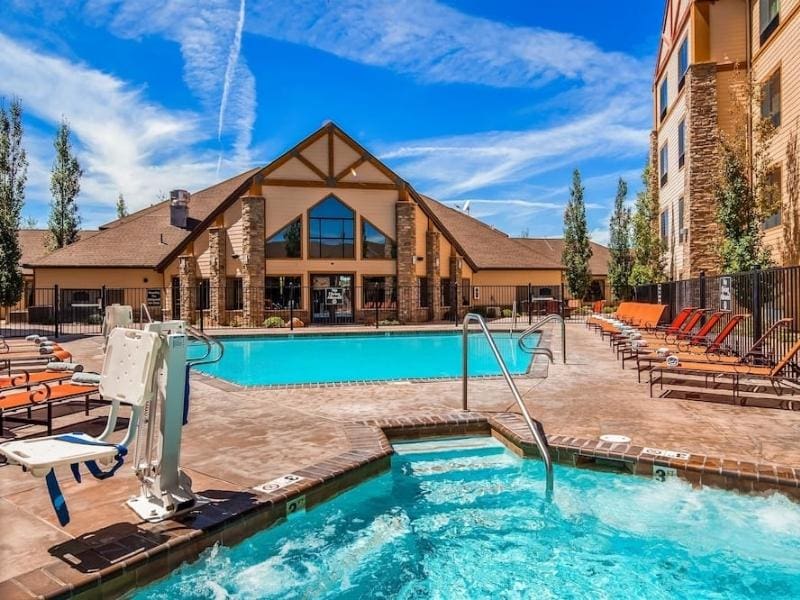
Where to Stay in Bryce Canyon
If you’re keen to stay inside the park, consider the Lodge at Bryce Canyon for your stay! The accommodation has three suites, 40 cabins, and 70 motel rooms, with all the other amenities needed for a comfortable stay. Do note that the restaurant and main lodge are closed annually from November 1st until the end of March.
If you don’t want to stay within the park but nearby, both Best Western Plus Ruby’s Inn and Best Western Plus Bryce Canyon Grand Hotel are within a mile of the park entrance. Tropic, Escalante, and Panguitch are also great places to search for lodging.
The most popular place for camping in Bryce Canyon is North Campground.
Capitol Reef National Park
2-3 Nights, 2 Hour Drive from Bryce Canyon to Capitol Reef
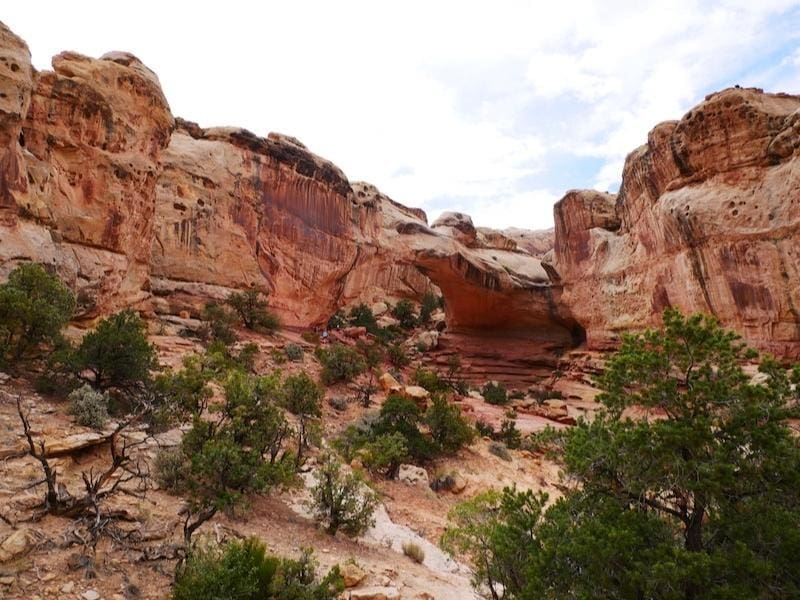
The least visited and most remote of all national parks in Utah, Capitol Reef is a paradise for adventure lovers. Only a handful of visitors come, and the great majority just drive through the park without truly exploring it.
Meanwhile, there are tons of kid-friendly things to do in Capitol Reef, and the park is home to endless hikes and scenic vistas. This national park has all the spectacular scenery and none of the crowds of Arches or Zion, where trails can feel too busy and take away from the experience.
Things to Do in Capitol Reef
One of the best hiking trails in Capitol Reef is Hickman Bridge. The trailhead begins just two miles from the Capitol Reef Visitor Center and turns into a relatively flat hike in the middle of Utah’s Red Canyon country. The hike culminates with a cool natural arch with a large enough area underneath to sit down and relax in the shadow.
If you’re looking for a more challenging hike with fewer people, consider hiking to Rim Overlook. This 1.9-mile hike is still undiscovered and leads to one of the park’s best overlooks.
If you have a four-wheel-drive vehicle, you can spend the night camping in Cathedral Valley District, one of the park’s most spectacular areas.
Know Before You Go
Make sure always to carry paper maps or download offline maps, especially if you are going hiking. Cell phone connection is often spotty or non-existent in many park areas, and you shouldn’t rely on your phone.
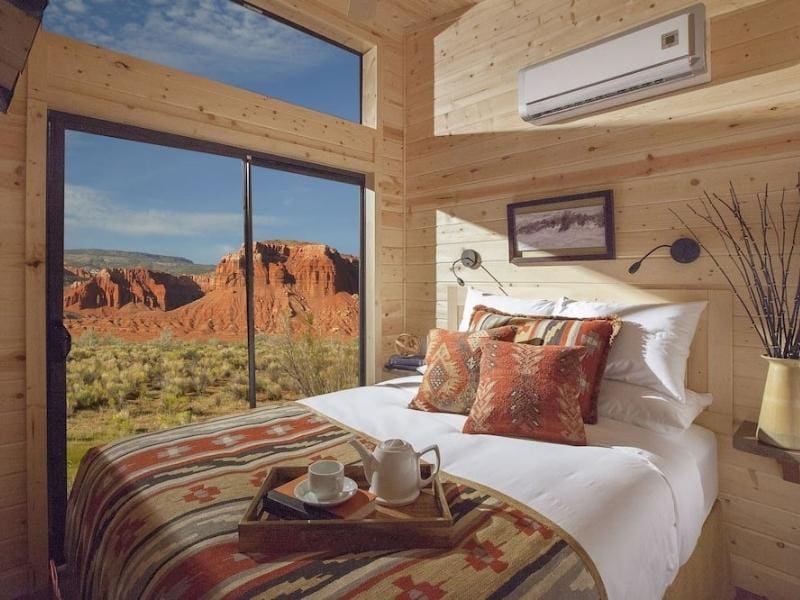
Where to Stay Near Capitol Reef
After exploring Capitol Reef National Park, head to Torrey, a small town at the park’s west entrance, where you can find hotels, restaurants, and other amenities. There are also a host of stunning vacation rentals in the area. Certain stores and restaurants may close when summer is over, as winter is the slowest time, with very few visitors.
Fruita Campground is the only developed site for camping in Capitol Reef National Park and features flush toilets, potable drinking water, and a dump station.
Bentonite Hills
1 Day, Offbeat Capitol Reef National Park Day Trip
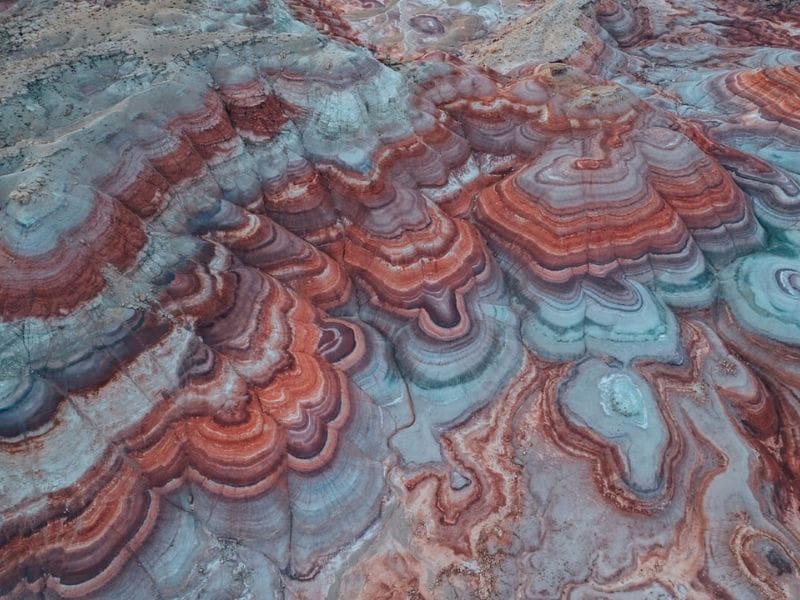
Tucked away in a remote section of Capitol Reef National Park is Bentonite Hills, best known for being one of the most otherworldly landscapes in Utah. The hills are streaked with colors throughout the day, but at sunrise and sunset, they truly come alive. If you plan to spend a few days exploring Capitol Reef and have access to a 4×4 vehicle, a Bentonite Hills visit is a must.
Things to Do in Bentonite Hills
The Bentonite Hills are an off-the-beaten-path stop in southern Utah. They are definitely worth a visit if you are going to Capitol Reef already. Thanks to a rocky dirt road, you’ll need a 4-wheel drive vehicle with high clearance for the best chance of getting here.
You can hike in the area, but be careful where you walk. You don’t want to step on the popcorn-like soil, as the damage takes years to repair. Instead, walk in other footprints or the washes running through the hills. There is no support in this area, so take along any food or drinks you want and make sure to pack out any trash. There are also no restrooms, so you will want to plan ahead and follow Leave No Trace principles.
If you stop by the Bentonite Hills, make sure to visit at sunrise or sunset. You’ll be able to watch the hills change colors to take on the famous purples and blues often seen in photos.
Where to Stay Near Bentonite Hills
The Bentonite Hills are best seen as part of your visit to Capitol Reef and not as an overnight. However, there is lodging and food available in nearby Hanksville. There are also plenty of places to camp nearby if you want to rough it for the night to stay in the area.
Goblin Valley State Park
1 Day, 1 Hour Drive From Capitol Reef to Goblin Valley
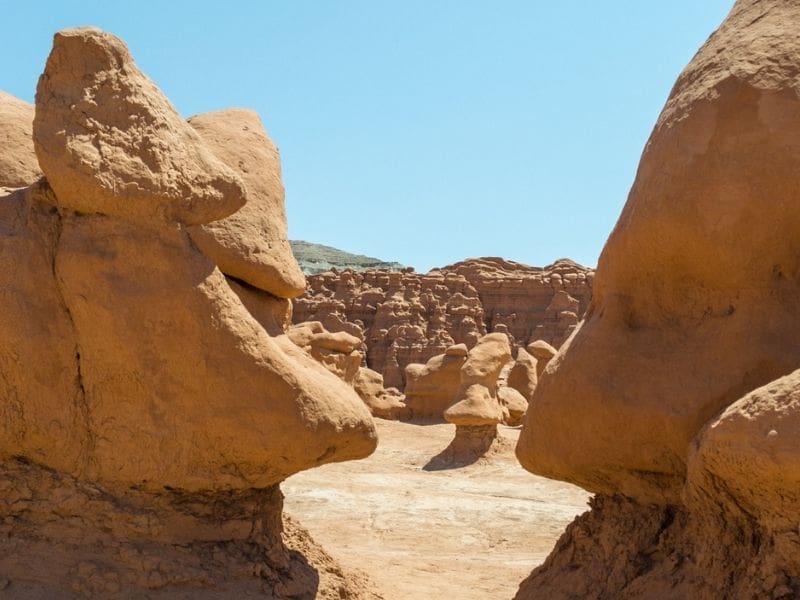
The perfect spot to break up the drive from Capitol Reef to Moab, Goblin Valley State Park is unusual because the park is filled with ‘goblins’ or otherworldly-looking rock formations. The goblin formations are in the middle of nowhere, and there are a ton of them.
Things to Do in Goblin Valley State Park
The main event at Goblin Valley State Park is the goblins, so one of the most popular things to do is to explore them up close. Different valleys within the park are all filled with strange formations that you can explore freely. This park is unique in that you are allowed on the rock formations and can climb on and around them.
Throughout the park, there are several Goblin Valley hikes that lead to the desert floor or around the valleys. Goblin’s Lair is a popular hike that leads to a slot canyon. If you have a permit, you can even rappel into the ‘lair.’ You can also book a half-day canyoneering adventure with a rappel into the ‘Chamber of the Basilisk.
Know Before You Go
The best time to visit Goblin Valley is in the early morning, later in the afternoon, or in the early evening. There is little shade, and the desert rocks can get pretty hot. You’ll want to have lots of water with you and also pay attention to where you wander! It’s easy to get turned around.
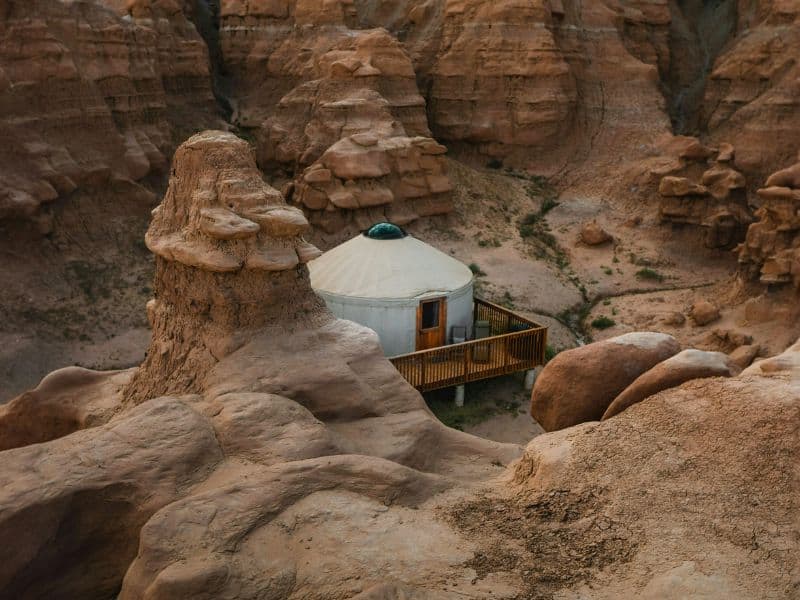
Where to Stay Near Goblin Valley
Goblin Valley is a great place for a stopover en route from Capitol Reef to Moab or as a day trip from Moab, as it’s about 1.5 hours away, and there’s not much else around it. If you want to explore the state park more in-depth, there is a 26-site campground within the park or nearby yurts that give more of a glamping experience.
Arches National Park
1-2 Days, 2 Hour Drive From Capitol Reef to Arches
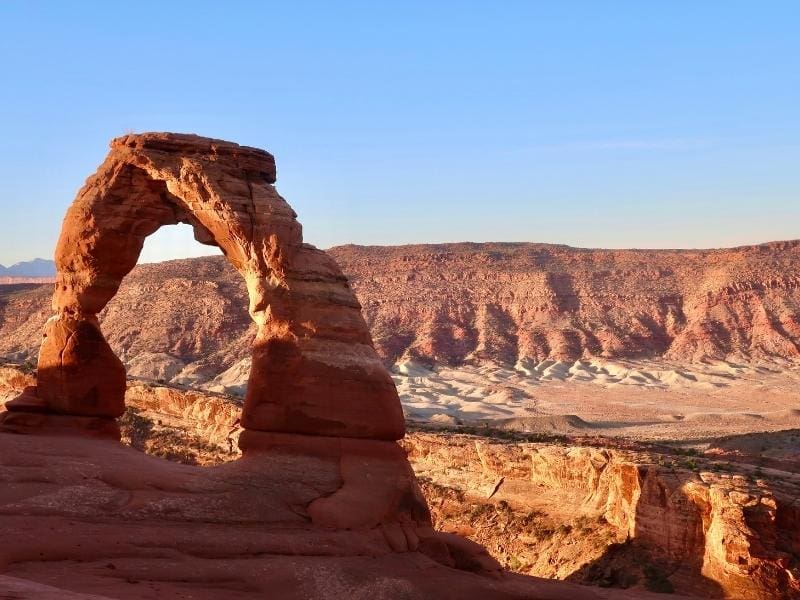
Arches is most well known for – unsurprisingly – its red rocks formed in the shape of arches! The most famous arch in all of Utah is known as Delicate Arch and is even featured on the Utah state license plate. One day in Arches is sufficient, but two is best if you can spare the time.
Things to Do in Arches National Park
There are a ton of epic hikes in Arches National Park catering to all skill levels. Delicate Arch cannot be missed. It’s very popular, so you will want to check it out before the crowds arrive. Sunrise is a great time to see the arch because you can beat the crowds and the heat.
Next, head to Devil’s Garden to see Landscape Arch, one of the other popular arches in the park.
It’s also worthwhile to stop by the 3 Gossips. This formation is right near the park entrance, and it really does look like three gossiping women.
Arches Photography Tip
A note to photographers: mid-day light gets harsh. If you’re into photography, visit in the early morning or early evening – you can avoid the heat and snag some gorgeous photos!
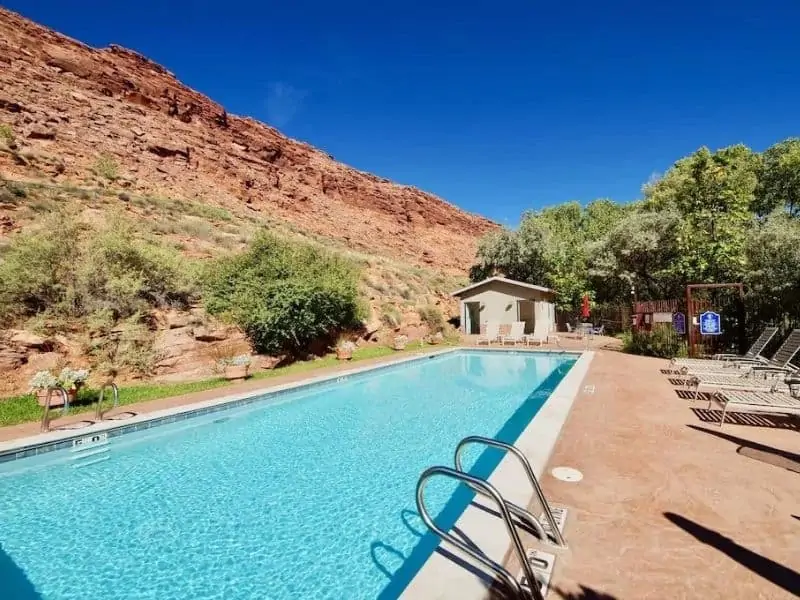
Where to Stay Near Arches National Park
Aside from camping, there is no lodging inside Arches National Park, so most choose to base themselves in the nearby town of Moab. Moab is just five miles south of Arches and close to Canyonlands National Park and Dead Horse Point State Park. It’s easily one of the most alluring little gateway towns in the USA and has become a destination in and of itself.
The Best Western Plus Canyonlands Inn has an unbeatable location in the heart of town within walking distance of great bars and restaurants. If you prefer a vacation rental, our Moab Airbnb guide includes 17 great options for all budgets.
Devils Garden is the only campground inside Arches National Park and is typically full every night during the high season. Reservations are accepted between March 1st and October 31st.
Canyonlands National Park
1 Day, 40 Minute Drive from Moab to Canyonlands
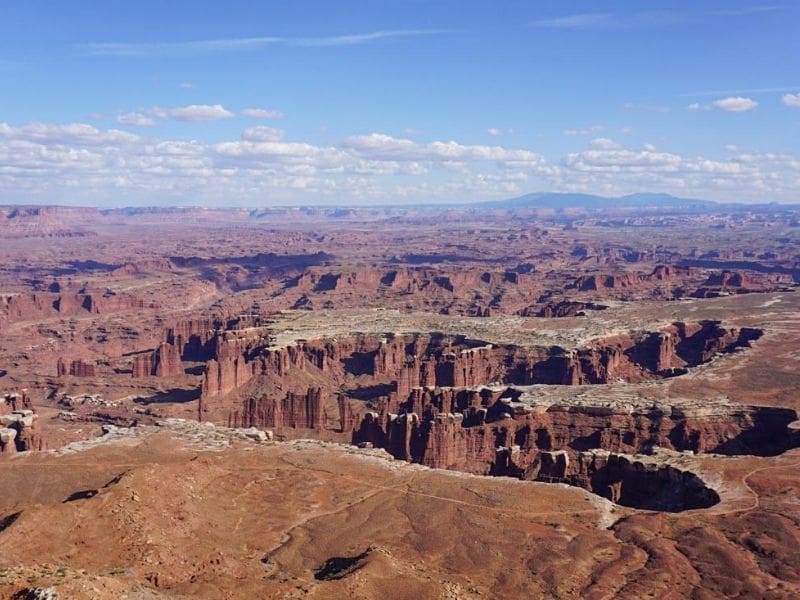
Experienced by Kristina of Off Path Travels
Canyonlands National Park lives up to its name, with miles and miles of red rock canyons carved out by the Colorado and Green rivers. This high desert park is known for its vast canyons, stunning mesas, and beautiful red rock formations of arches, buttes, fins, and spires.
Most people visit Canyonlands National Park for an afternoon after exploring Arches National Park (just 30 minutes away). Plan to set aside at least one or two full days for a more in-depth exploration of the park, including some of the more challenging hikes.
The park is divided into four districts; Island in the Sky is the most accessible and closest to Arches National Park and Moab. Make sure to bring plenty of water, as it’s only available at the Island in the Sky Visitor Center from Spring through Fall.
Things to Do in Canyonlands
First, stop at the overlooks along the Island in the Sky Scenic Drive for gorgeous views of the canyons below. Also, don’t miss the 90-minute round-trip hike at Grand View Point, with one mile of stone stairs and unforgettable views from cliff edges. For a less strenuous option, walk the easy half-mile (0.8 km) trail to photograph the park’s famous Mesa Arch.
If you’re up for an adventure, spend the night at a campground to enjoy some of the best stargazing in the country. And if you really want to get off the beaten path, drive one of the many four-wheel-drive dirt roads throughout the park.
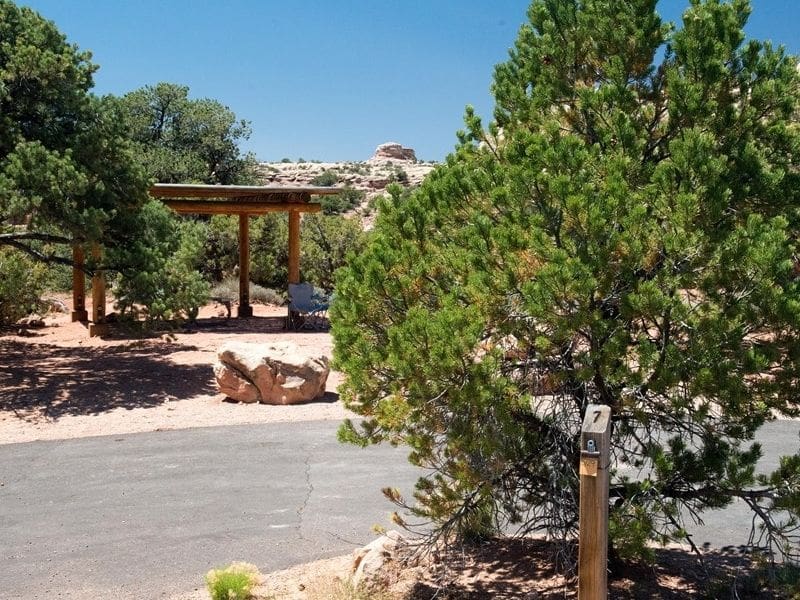
Where to Stay in Canyonlands
Since Canyonlands lacks any formal lodging options, the best place to stay inside the national park is at one of its two campgrounds. Island in the Sky Campground is the closest to Arches, near the Island in the Sky Scenic Drive, and next to the Green River Overlook.
If you aren’t planning to camp, basing yourself in nearby Moab is the best option.
Dead Horse Point State Park
1 Day, 40 Minute Drive from Moab to Dead Horse Point
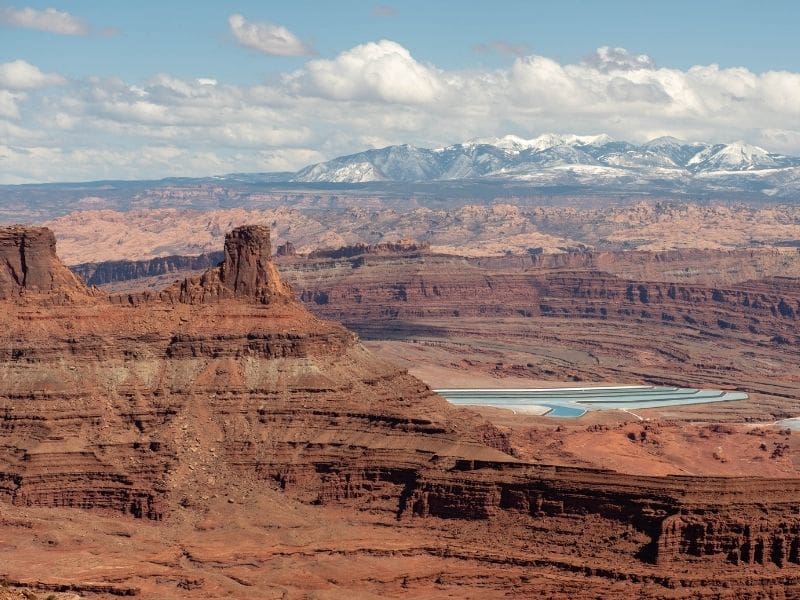
Experienced by Val of Voyages With Val
An absolutely underrated Moab day trip, Dead Horse Point State Park is best known for its proximity to Canyonlands National Park and its magnificent overlook over the Colorado River.
Things to Do in Dead Horse Point State Park
The best thing to do in Dead Horse Point State Park is to hike the fantastic five-mile trail around the rim of the plateau the park sits on. If you’d rather bike, there is also a system of mountain biking trails in the park. You can also enjoy the scenic views driving to Dead Horse Point or come at night to gaze at the stars in some of the clearest skies in the United States.
Dead Horse Point State Park is small and can be combined with hiking in Canyonlands National Park for a one-day adventure if you are short on time. It is less visited than Canyonlands, so come here early in the morning or later in the afternoon to round off your Utah National Parks road trip with pristine scenery and hard-to-find solitude.
Where to Stay in Dead Horse Point State Park
Usually, Dead Horse State Park is visited as a day trip from Moab. However, the park has two campgrounds – Kayenta Campground and Wingate Campground. These campgrounds are both in Dead Horse State Park and are open from mid-February to December. This is the best place to stay if you want to stay within the park.
Back to Las Vegas (or Elsewhere)
7 Hour Drive from Moab to Las Vegas
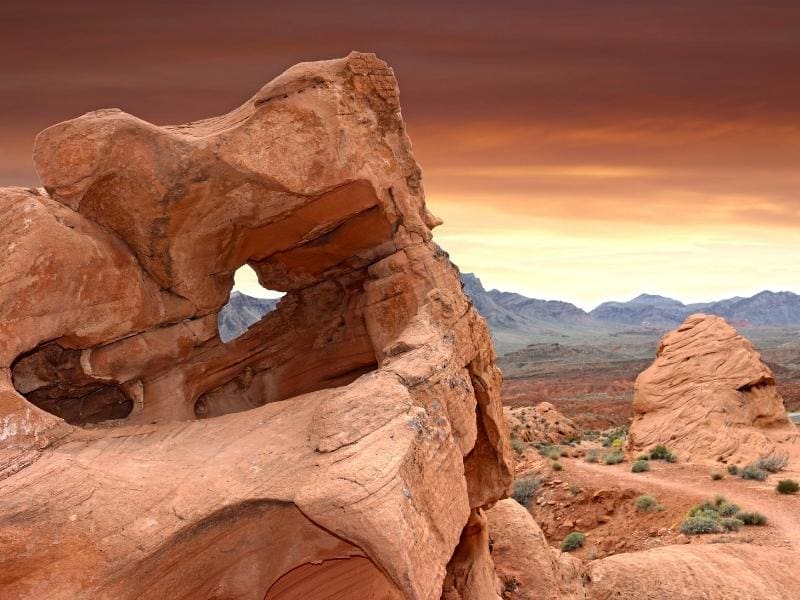
On this Utah National Parks Road Trip, you can hike Angels Landing, drive scenic Hwy 9 from Zion to Bryce Canyon, sled down giant dunes in Coral Pink Sand Dunes State Park, wander past hoodoos in Bryce Canyon, gaze at the stars in Capitol Reef, pretend you’re on Mars in Bentonite Hills, clamber over “goblins” in Goblin Valley, admire Arches National Park at sunrise and so much more.
On this awesome national parks road trip, you can experience the best of what Utah offers in as little as one to two weeks.
Until next time, Adventurers…
Browse more national park road trip guides
All photos courtesy of hotel, booking or information sites
Up and Away Magazine is reader-supported. This means that when you make a booking via one of our affiliate links, we earn a commission at absolutely no additional cost to you. In this way, we are able to bring you content for free. Your continued support is greatly appreciated. Adventure on!



